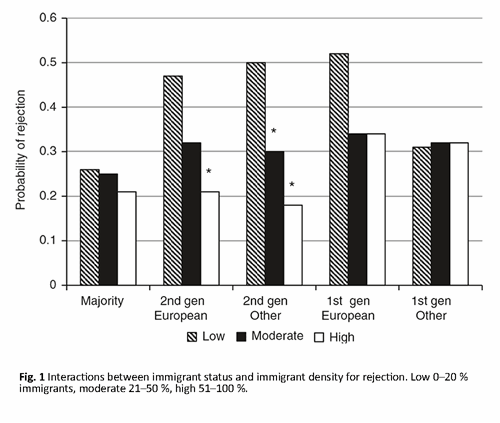Someone to sit next to in the segregated class room
“Who in your class would you not like to sit next to?”
This question was posed to almost 5000 pupils (age 14–15) at Swedish high schools 2010/2011. Many adolescents experience systematic rejection during their school years which can leave deep mental scars. These years make up a period in life when acceptance among peers, for example having someone to sit next to in class, is particularly important since this is when the foundation for self-worth and a sense of identity is shaped. So, who ends up on the list of students that nobody wants to sit next to?
If you or your parents aren’t born in Sweden the risk of you being on the list increases significantly. This goes even if we take into consideration your parents’ educational level, your family’s income and how smart you are. Most people intuitively think that ethnic segregation in schools is bad since it’s connected to lower grades, but in the case of social rejection there is a positive effect: The more students in a class that have immigrant background, the fewer of them will end up on the list of people nobody wants to sit next to.
It seems like segregation can have a protective effect where students with immigrant background run less risk of social exclusion in school if they’re in a class with at least 21 %, but preferably over 51 % other students with immigrant background. But at the same time it might be harder for students in a class with few native Swedes to build networks and become integrated in the Swedish society later in life. It all boils down to what will benefit these students in the long run: A more integrated life in the future, or somebody to sit next to today?


The article Social Exclusion among Peers: The Role of Immigrant Status and Classroom Immigrant Density written by Stephanie Plenty and Jan O. Jonsson, recently won the 2018 best article award by Journal of Youth and Adolescence.








